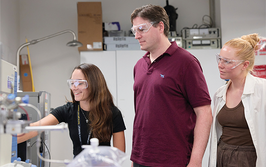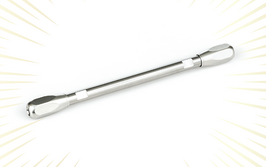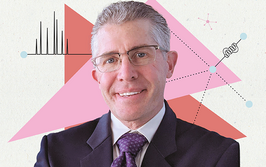Free Innovation Accelerator!
Open-source scientific hardware is a reality. It gives researchers more freedom to experiment with design and can open new doors in research. What’s stopping you?
Ever finished your meal at a fancy restaurant and realized that you’ve forgotten your wallet? I had that same sinking feeling when I saw the price of our first round of heat exchanger prototypes. Our heat exchangers use plastic instead of metal and make up for their relatively weak thermal conductivity with very thin layers between microchannels. The numerical simulations were promising so we wanted to optimize the design and verify experimentally. Sadly, we realized that it was impossible to conduct the comprehensive study needed to drive the innovative technology to market at the prices quoted. Buying a commercial laser welding system was out of the question (budget!) and designing one from scratch was entirely unacceptable (time!). We turned to the free and open source hardware (FOSH) community for a solution. FOSH is publicly available hardware with designs that can be studied, modified, distributed, fabricated, or even commercialized, which I covered in greater detail in the first issue of this magazine.
Fortunately, graduate student Peter Jansen (McMaster University, Ontario, Canada) had already developed an open-source laser cutter for about 5 percent of the cost of a commercial system; it uses 3D printable mechanical components. We downloaded his schematics, adapted them to our own needs, and created a digitally-controlled polymer laser welder, which we had up and running shortly after the laser arrived. Countless microchannels later, that one device, which allowed us to quickly test innovative designs, has saved us tens of thousands of dollars on that one project alone. Our group now routinely uses, develops and shares scientific FOSH for scientific equipment – everything from rapid prototyping systems to analytical equipment – to allow others to innovate rapidly as well.
We recently completed an open-source mobile water quality-testing platform, based on an open-source desktop colorimeter. We adapted it to be 3D printed and powered by multiple mobile sources, and expanded its ability to include nephelometry (measurement of turbidity). In shoot-outs with commercial systems we’ve found comparable accuracy and reproducibility for about one tenth of the cost.
Clearly, we are not the only lab to realize the opportunity of FOSH. The concept of open-source scientific hardware is catching on like wildfire all over the globe, as I document in my book, “Open-Source Lab: How to Build Your Own Hardware and Reduce Research Costs”. Lower cost, faster innovation cycles, and reduced time investment are great, but the primary advantages of open source hardware are customization and control. Rather than rely on what is on the shelf, you can create scientific instruments that meet your exact needs and specifications, which is particularly helpful to those on the bleeding edge who need never-before-seen equipment to make the next great discovery.
There is a deeper benefit to developing open-source hardware: scientific good karma. People from all over the world have made suggestions and built upon the hardware our group has shared, which, in turn, makes better equipment for us. It’s like having a global R&D firm with thousands of engineers all working for you. The better they are, the more help you get. And that brings us neatly back to Jansen’s current work (as a professor), developing a hand-held open-source tricorder (tricorderproject.org). Yes, Star Trek fans, that kind of Tricorder. It already has a dizzying array of research-grade sensors to measure atmospheric temperature, humidity, magnetic fields, light intensity, color, pressure, location, acceleration, and even non-contact infrared detection. The next generation of tricorders will also include a sophisticated water quality-testing module, which he did not have to spend a penny developing – all the source code for the hardware and software is free, compliments of my lab’s work.
If you get the feeling that application of FOSH to science is just getting started, that’s because it is. What great innovations will the next generation of open-source scientists develop, with tricorders in their back pockets and 3D printers under their beds? It’s exciting to imagine the possibilities.
Joshua Pearce received his PhD in Materials Engineering from the Pennsylvania State University. He is currently an Associate Professor cross-appointed in the Department of Materials Science & Engineering and in the Department of Electrical & Computer Engineering at the Michigan Technological University where he runs the Open Sustainability Technology Research Group. “My research concentrates on the use of open source appropriate technology to find collaborative solutions to problems in sustainability and spans areas of electronic device physics and materials engineering of solar photovoltaic cells, but also includes scientific hardware cost annihilation using open-source methods.”

















